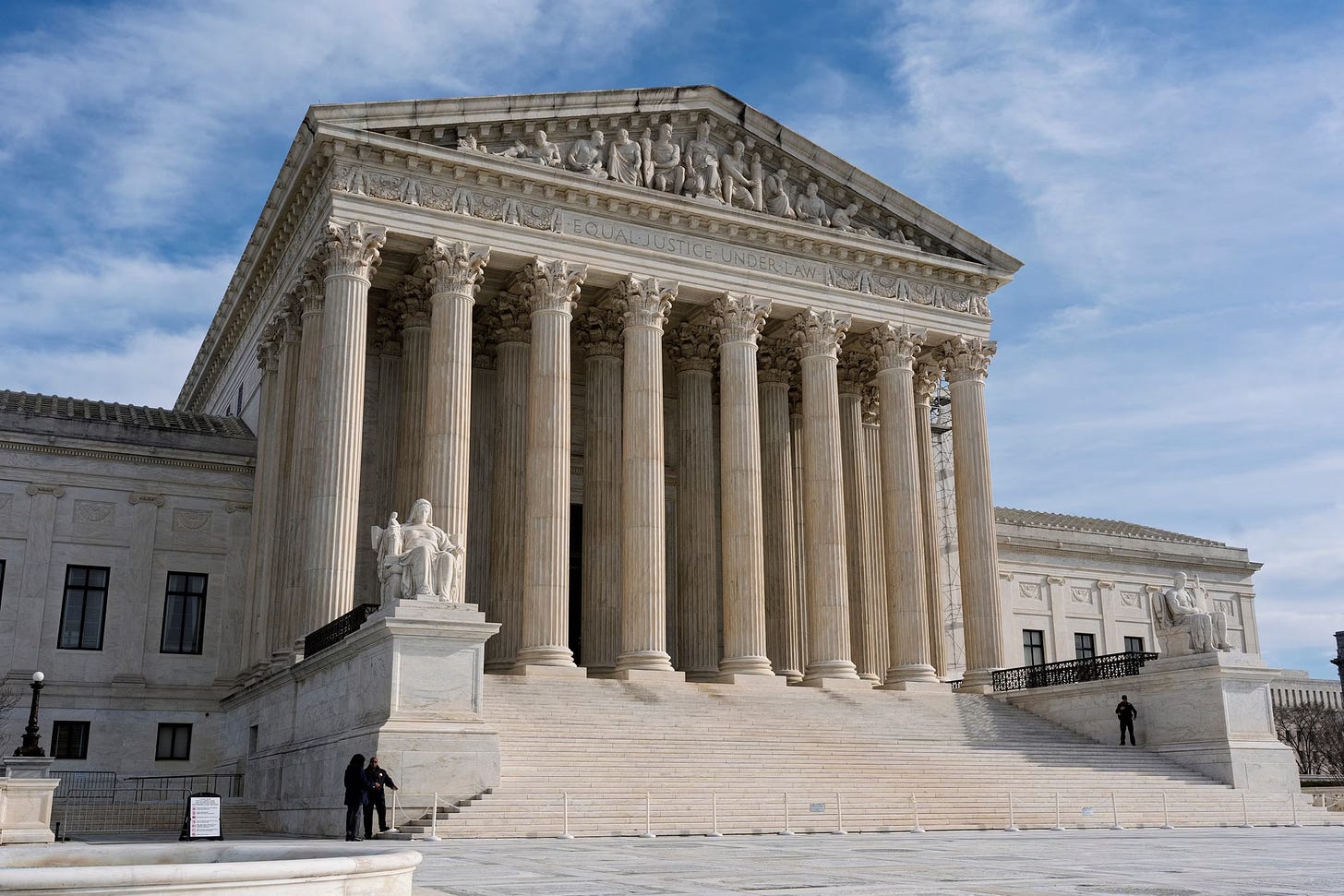Supreme Court Signals That It Will Declare Removal Protections for NLRB Members Unconstitutional
Member Wilcox will remain removed during her legal challenge, depriving NLRB of quorum.
The Supreme Court issued a two-page order yesterday confirming that NLRB Member Gwynne Wilcox must remain removed from her position during the legal challenge over her termination from the NLRB. The order strongly indicates that the Supreme Court will soon rule that removal protections for the heads of independent executive agencies like the NLRB are unconstitutional and that the president can fire these heads at will. This is a standard part of the “unitary executive” theory that the conservative legal movement has been pushing for a long time.
Somewhat amusingly, when issuing the order, the Supreme Court was clearly worried that it would be interpreted as permitting the president to fire members of the Federal Reserve’s Board of Governors, the entity responsible for determining the monetary policy of the country. Logically, it is difficult to see how the court’s reasoning would not also apply to the Fed. But it is easy to see how the court is specifically worried about the economic damage that might result from President Trump specifically being allowed to fire Fed members.
The order’s digression about the Fed is a useful reminder that constitutional law is just a form of discretionary policymaking power exercised by the Supreme Court rather than Congress.
Here is a brief summary of Wilcox’s legal battle up to this point:
On January 28, President Trump fired Member Wilcox without cause. This violated Section 3(a) of the NLRA, which forbids terminating Board members without cause, but the Trump administration indicated that it intended to challenge the constitutionality of those removal protections. This resulted in the NLRB falling to two members, which is fewer than the three members required for a quorum.
On March 6, the DC District Court ruled that the termination violated Section 3(a) of the NLRA and reinstated Member Wilcox.
Between March 11 and March 28, Member Wilcox resumed her role at the NLRB, returning the agency to a quorum, and the NLRB issued nine decisions.
The DC District Court ruling is currently being appealed by the Trump administration, which raises the question of whether Member Wilcox should be allowed to do her job at the NLRB during the appeal or whether she should have to remain removed during the appeal.
On March 28, a DC Circuit Court panel ruled that she must remain removed during the appeal.
On April 7, the entire DC Circuit Court ruled that she must remain reinstated during the appeal.
On April 9, the Supreme Court, acting through John Roberts, ruled that she must remain removed during the appeal.
On May 22, the entire Supreme Court, in a 6-3 decision, confirmed that she must remain removed during the appeal.
The practical upshot of all of this for the moment is that Member Wilcox will remain removed for the duration of the legal battle over the constitutionality of removal protections for NLRB members, which will deprive the NLRB of a quorum to act.
Below is a copy of the Supreme Court’s order and a summary of that order, including a summary of Elena Kagan’s dissent.
The Case and Issues
The case arose when President Trump removed Gwynne Wilcox from the National Labor Relations Board (NLRB) and Cathy Harris from the Merit Systems Protection Board (MSPB) without providing the "cause" required by their governing statutes. Lower courts issued injunctions blocking these removals, prompting the government to seek an emergency stay from the Supreme Court.
The Majority's Decision
The Supreme Court granted the stay by a 6-3 vote, allowing the removals to proceed pending full litigation. The majority's reasoning rested on several key points:
Constitutional Authority: The Court emphasized that Article II vests executive power in the President, generally allowing removal of executive officers without cause, subject only to "narrow exceptions recognized by our precedents."
Executive Power Analysis: The majority suggested that both the NLRB and MSPB "exercise considerable executive power," potentially placing them outside traditional protections for independent agencies.
Balance of Harms: The Court concluded that allowing removed officers to continue exercising executive power posed greater risks than preventing wrongfully removed officers from performing their duties.
Federal Reserve Carve-out: Notably, the majority explicitly stated that their decision does not affect Federal Reserve Board members' removal protections, characterizing the Fed as a "uniquely structured, quasi-private entity" with distinct historical precedent.
Justice Kagan's Dissent
Justice Kagan, joined by Justices Sotomayor and Jackson, dissented from the majority's decision, raising several constitutional and procedural concerns.
Humphrey's Executor Precedent: Kagan noted that the 1935 Humphrey's Executor decision has stood for 90 years as established precedent, holding that Congress can protect independent agency members from presidential removal without cause. She argued this precedent applies to multi-member, bipartisan bodies like the NLRB and MSPB that exercise "quasi-legislative or quasi-judicial" functions.
Procedural Concerns: The dissent expressed concern about using the emergency docket to address questions that may alter established law, arguing that such decisions typically require full briefing, oral argument, and deliberation rather than expedited consideration.
Characterization of Interests: Kagan disagreed with the majority's framing of the balance of harms, arguing it should focus on Congress's institutional design for independent expertise-based governance serving the public interest, rather than individual job security versus presidential prerogatives.
Historical Context: The dissent observed that no president since the 1950s had attempted such removals, and that 14 presidents have operated within congressional restrictions on removing independent agency members.
Federal Reserve Distinction: Kagan questioned the majority's carve-out for Federal Reserve independence, noting it relies on the same constitutional foundations as other independent agencies and arguing the cited precedent doesn't support the distinction drawn.


